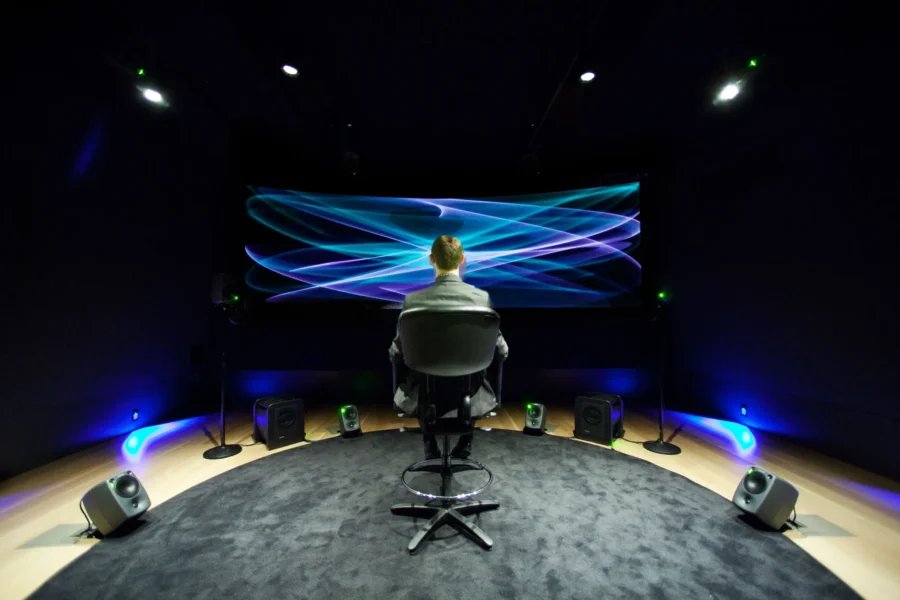Sound laboratories play a crucial role in advancing our understanding of acoustics, sound engineering, and their applications across various industries. These specialized facilities are equipped with state-of-the-art technology and conduct innovative experiments that shape the future of sound-related technologies. In this article, we explore some of the groundbreaking experiments conducted in sound laboratories worldwide, highlighting their impact and significance.
Introduction to Sound Laboratories
Sound laboratories, also known as acoustic laboratories or audio research centers, are dedicated spaces designed to study sound in controlled environments. These facilities are equipped with advanced equipment such as acoustic chambers, anechoic chambers, soundproof rooms, and specialized measurement instruments. Researchers, engineers, and scientists utilize these laboratories to conduct experiments aimed at improving sound quality, reducing noise, enhancing acoustic comfort, and developing cutting-edge technologies.
Anechoic Chambers: Simulating Silence
One of the most iconic features of sound laboratories is the anechoic chamber. This chamber is designed to absorb reflections of sound or electromagnetic waves, creating a space with no echoes or reverberations. Anechoic chambers are used to measure the acoustic properties of equipment, study sound propagation, and conduct psychoacoustic experiments.
Researchers utilize anechoic chambers to conduct precise experiments that require controlled acoustic conditions. For example, studies on the directional properties of sound sources, the impact of room acoustics on audio perception, and the behavior of sound waves in different environments are commonly conducted in these chambers.
Psychoacoustic Research: Understanding Human Perception
Psychoacoustics is the branch of psychology and acoustics concerned with the perception of sound by the human ear and brain. Sound laboratories conduct extensive psychoacoustic research to understand how humans perceive and interpret sound. These experiments explore various aspects such as loudness, pitch, timbre, localization, and masking effects.
Innovative experiments in psychoacoustics involve using advanced auditory models and perceptual metrics to quantify subjective auditory experiences objectively. For instance, researchers might investigate how different audio codecs affect music quality perception or how environmental noise impacts cognitive performance.
Vibroacoustic Testing: Evaluating Structural Vibrations
Vibroacoustic testing is another critical area of experimentation in sound laboratories. This involves studying the interaction between structural vibrations and acoustic waves. Researchers use vibroacoustic test setups to assess the noise and vibration characteristics of mechanical systems, vehicles, industrial machinery, and consumer products.
Experiments in vibroacoustics aim to mitigate unwanted noise and vibrations, improve product design for noise reduction, and enhance overall acoustic comfort. Advanced measurement techniques such as laser vibrometry, modal analysis, and vibration isolation systems are employed to achieve precise results.
Acoustic Simulation and Modeling: Virtual Environments
With advancements in computational technology, sound laboratories now employ acoustic simulation and modeling techniques to create virtual environments for experimentation. These simulations allow researchers to predict acoustic behavior in complex scenarios without physical prototypes.
Using computer-aided engineering (CAE) tools and finite element analysis (FEA), researchers can simulate sound propagation, reverberation, and noise control strategies in architectural spaces, urban environments, and industrial settings. Virtual acoustic modeling enables engineers to optimize designs for acoustic performance, identify noise sources, and implement effective soundproofing solutions.
Emerging Technologies in Sound Laboratories
The field of acoustics and sound engineering continues to evolve with the integration of emerging technologies into sound laboratories. Some of the latest innovations include:
- Active Noise Control (ANC): Employing adaptive algorithms and digital signal processing to cancel out unwanted noise in real-time.
- Binaural Recording and Playback: Capturing and reproducing sound with spatial accuracy to simulate realistic auditory experiences.
- Augmented Reality (AR) for Acoustics: Visualizing sound fields and acoustic parameters overlaid onto physical environments using AR technology.
- Sound Localization Systems: Utilizing microphone arrays and beamforming techniques to pinpoint sound sources accurately.
Applications Across Industries
The research conducted in sound laboratories has diverse applications across various industries:
- Automotive: Improving vehicle cabin acoustics, reducing road noise, and enhancing audio systems.
- Architecture: Designing acoustically optimized spaces, concert halls, auditoriums, and offices.
- Consumer Electronics: Enhancing audio quality in headphones, speakers, and home entertainment systems.
- Healthcare: Studying the impact of noise on patient recovery and developing quieter medical equipment.
- Environmental Noise Control: Mitigating noise pollution in urban areas and around transportation hubs.
Sound laboratories are at the forefront of innovation in acoustics, sound engineering, and psychoacoustic research. Through advanced experimentation and technological advancements, these facilities continue to push the boundaries of what is possible in understanding, controlling, and harnessing sound. The experiments conducted in sound laboratories around the world not only contribute to scientific knowledge but also drive advancements in product development, environmental sustainability, and human well-being in our increasingly noisy world. As technologies evolve, so too will the capabilities of sound laboratories, ensuring that they remain pivotal in shaping the future of sound-related industries and applications.
